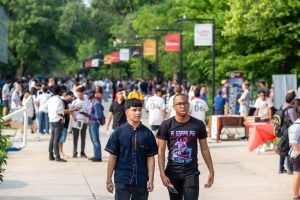Diversity is a beautiful thing, and celebrating it in early childhood classrooms is essential for creating a nurturing and inclusive learning environment for young children. In today’s multicultural world, classrooms are filled with students from a wide range of backgrounds, cultures, and ethnicities. Embracing this diversity not only enriches the educational experience for children but also helps to foster a sense of empathy, understanding, and respect for others.
One of the first steps to celebrating diversity in early childhood classrooms is to create a curriculum that reflects the diverse experiences of the students. This means incorporating books, stories, and activities that showcase different cultures, traditions, and perspectives. By exposing children to a variety of backgrounds from an early age, educators can help them develop a greater appreciation for the world around them and a curiosity about different ways of life.
Furthermore, it is important for teachers to create an inclusive classroom environment where all children feel valued and respected. This may involve introducing classroom norms and rules that promote kindness, empathy, and acceptance. Teachers can also encourage children to share their own unique experiences and perspectives, allowing each child to feel seen and heard.
In addition, celebrating diversity can also involve incorporating different languages into the classroom. Language is a crucial aspect of culture, and exposing children to different languages early on can help to promote language development, cognitive skills, and cultural awareness. Teachers can introduce songs, rhymes, and greetings in different languages, as well as invite bilingual students or parents to share their language skills with the class.
Moreover, celebrating diversity in early childhood classrooms can also involve celebrating holidays and traditions from various cultures. This can be a fun and engaging way for children to learn about different customs and celebrations around the world. By incorporating activities such as art projects, music, and food tastings, children can gain a deeper understanding of cultural diversity and develop a greater sense of empathy and respect for others.
Overall, celebrating diversity in early childhood classrooms is crucial for creating a welcoming and inclusive learning environment for all children. By incorporating diverse perspectives, experiences, and languages into the classroom, educators can help children develop a greater appreciation for the world around them and a sense of empathy and understanding for others. As educators, it is our responsibility to foster a culture of acceptance and respect in our classrooms, and celebrating diversity is a key component of that effort.



